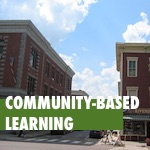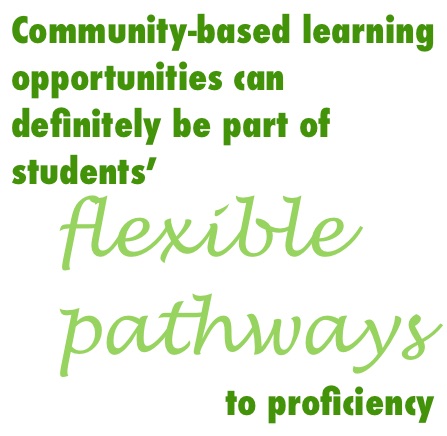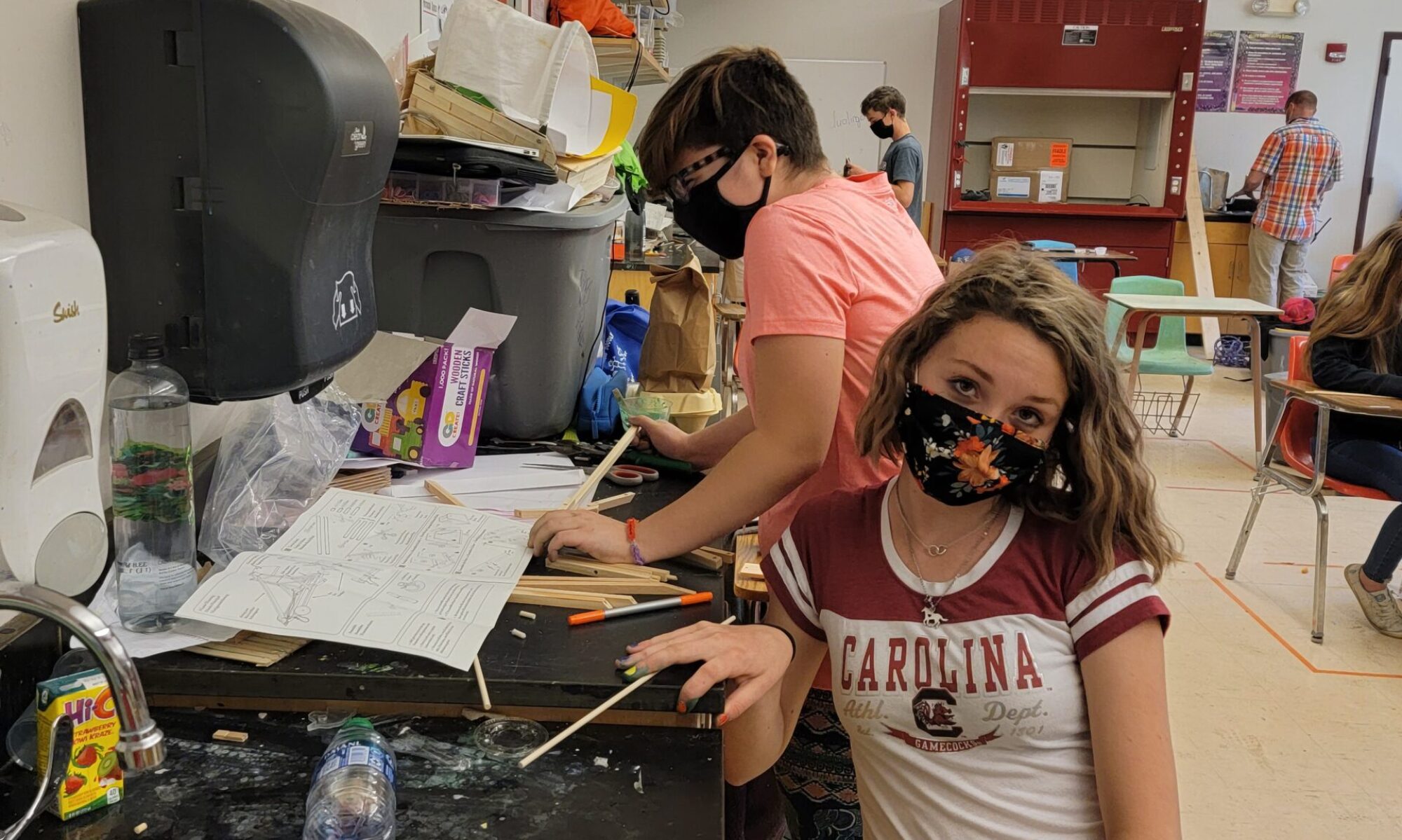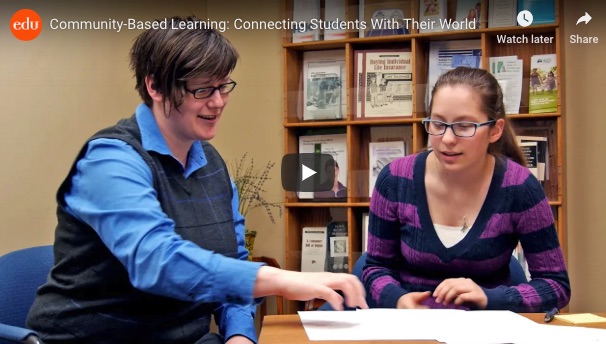4 lessons from a recent gathering
 On Friday, March 11, more than 50 participants from public and private schools, community education partners, and higher education from Vermont and the surrounding region gathered for a Community Based Learning workday, put on by Big Picture Learning, Eagle Rock School, Big Picture South Burlington, and Partnership for Change. This day of speakers, working sessions, and roundtable discussions brought together educators from different settings to “explore the possibilities, challenges, and resources of community-based learning in Vermont.”
On Friday, March 11, more than 50 participants from public and private schools, community education partners, and higher education from Vermont and the surrounding region gathered for a Community Based Learning workday, put on by Big Picture Learning, Eagle Rock School, Big Picture South Burlington, and Partnership for Change. This day of speakers, working sessions, and roundtable discussions brought together educators from different settings to “explore the possibilities, challenges, and resources of community-based learning in Vermont.”
A few folks from the Tarrant Institute were in attendance, and in this post we present 4 lessons about community-based learning in Vermont, gathered from the formal and informal discussions throughout the day.
What is community-based learning?
Community Based Learning (CBL) refers broadly to student learning experiences outside the traditional school building or school day. These learning experiences are overseen by outside learning facilitators, be they a mentor, club leader, work supervisor, or the like.
CBL is nothing new — philosophers of education such as John Dewey and Ivan Illich wrote about the importance of the learning that children do outside of traditional schools. However, as discussed at this work day, in Vermont right now there are a number of promising factors and remaining challenges.
1. There’s a lot of support for community-based learning in Vermont
It was clear from the participants and the conversations that the policy and social context in Vermont is very fertile with regard to fostering community connections for student learning. A larger number of attendees showed up to this workday than anticipated, demonstrating interest.
 Both in the opening remarks and in the morning work sessions, Act 77 was identified by name as supporting community-based education. CBL opportunities can definitely be part of students’ flexible pathways towards proficiency.
Both in the opening remarks and in the morning work sessions, Act 77 was identified by name as supporting community-based education. CBL opportunities can definitely be part of students’ flexible pathways towards proficiency.
Culturally, there is also a spirit of valuing community and collaboration, represented here as partnerships between schools and outside institutions for education.
2. Scale up for success
The issue of scale loomed large over some of the conversations. In many ways the scale of the change seemed daunting, as pilot programs were shared which generated excitement but also begged the question of how to make flexible pathways and personalized learning happen for ALL students.
In other aspects, it appeared that the current small scale was an impediment to success, as demonstrated by the fact that college admissions offices are still generally stuck in traditional structures, and that the current generation of adolescents are just trying this for the first time. From comments in sessions and side conversations with educators, there seems to be a growing awareness that an incremental approach may not give rise to the structures needed for this very different model of education.
Check out this Edutopia video that examines what community-based learning looks like at Montpelier High School, in Montpelier, Vermont.

3. Community-based learning can put students in charge
Although it was noted in the opening remarks, the idea that community-based learning “makes students responsible for their own learning” has room for further development among many of these stakeholders. There is recognition that students engaging in learning outside of school are necessarily self-driven and actively participating in shaping their experience. However, with regard to evidence of proficiency and accountability structures, many participants still focused on credits, teachers of record, traditional assessment models, and the like.
That said, there was evidence that many teachers and other educational facilitators are willing to shift their thinking about the role of the student in identifying and presenting evidence of proficiency. For example, a teacher at a tech center brought the goal of reconciling his current workplace evaluation form with the transferrable skills from the VT AOE. Through the session he reached the conclusion that students could identify elements of their work that satisfied these standards, allowing the workplace to approve of, rather than generate, evidence of proficiency. He also thought that as his students become more accustomed to the language of proficiency and PLPs, they would be able to better set goals and targets for their workplace learning.
Many teachers around the table voiced interest and recognition for making similar shifts in their work.
4. Communication is still a challenge
It was clear that there are serious challenges with communication between the school domain and the outside learning facilitators. This is due in large part to the diversity of community partners and the school or district level individualization of structures and documentation.
At a number of different points, participants discussed the need for a crosswalk between an outside program and proficiency-based graduation requirements, only to be rebuffed by the challenge in doing this for numerous schools. Additionally, outside learning facilitators draw from their personal educational experience, and so still think in traditional ways about credits, scheduling, and responsibilities. They need to be able to “speak the language” in order to attract students to their programs, and to collaboratively identify proficiencies addressed by their programming.
For institutions that do not function within the Vermont educational discourse context, and especially those institutions without a historical educational mission, being able to identify and communicate about student learning is difficult. The fact that some external educational organizations offer their own frameworks, such as P21’s 21st Century Learning Skills, may add an additional layer of complexity.
The big takeaway:
Community Based Learning is not a new concept, and right now in Vermont there are real opportunities for students to be supported in their outside of school learning. Teachers, administrators, and outside groups are excited to engage students with this type of learning, but are still working to figure out how to make all of the systems work together.
Community-based learning image based off photo by Skeezix1000 – Own work, CC BY-SA 3.0



Community Based Learning in Vermont: 4 lessons by @mwolofson #vted https://t.co/oowAUKn24U https://t.co/d1ZzbU7Xqv
Hey – I wrote this! Community Based Learning in Vermont: What’s going on? https://t.co/KbYDQbQVlA #vtcbl
RT @innovativeEd: Community Based Learning in Vermont: 4 lessons by @mwolofson #vted https://t.co/oowAUKn24U https://t.co/d1ZzbU7Xqv
RT @innovativeEd: Community Based Learning in Vermont: 4 lessons by @mwolofson #vted https://t.co/oowAUKn24U https://t.co/d1ZzbU7Xqv
RT @innovativeEd: Community Based Learning in Vermont: 4 lessons by @mwolofson #vted https://t.co/oowAUKn24U https://t.co/d1ZzbU7Xqv
RT @innovativeEd: Community Based Learning in Vermont: 4 lessons by @mwolofson #vted https://t.co/oowAUKn24U https://t.co/d1ZzbU7Xqv
RT @innovativeEd: Community Based Learning in Vermont: 4 lessons by @mwolofson #vted https://t.co/oowAUKn24U https://t.co/d1ZzbU7Xqv